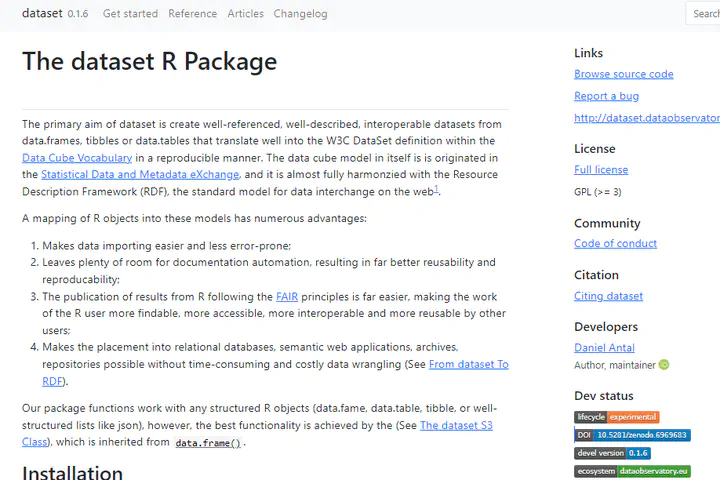dataset: Create Interoperable FAIR Datasets
Publish your datasets with FAIR metadata in open science repositories and place them on knowledge graphs

Interoperable, FAIR datasets
The primary aim of dataset is create well-referenced, well-described, interoperable datasets from data.frames, tibbles or data.tables that translate well into the W3C DataSet definition within the Data Cube Vocabulary in a reproducible manner. The data cube model in itself is is originated in the Statistical Data and Metadata eXchange, and it is almost fully harmonzied with the Resource Description Framework (RDF), the standard model for data interchange on the web[^1].
A mapping of R objects into these models has numerous advantages:
- Makes data importing easier and less error-prone;
- Leaves plenty of room for documentation automation, resulting in far better reusability and reproducability;
- The publication of results from R following the FAIR principles is far easier, making the work of the R user more findable, more accessible, more interoperable and more reusable by other users;
- Makes the placement into relational databases, semantic web applications, archives, repositories possible without time-consuming and costly data wrangling (See From dataset To RDF).
Our package functions work with any structured R objects (data.fame,
data.table, tibble, or well-structured lists like json), however, the
best functionality is achieved by the (See The dataset S3
Class), which
is inherited from data.frame().
Contact
For contact information, contributors, see the package homepage.
Code of Conduct
Please note that the dataset project is released with a
Contributor Code of Conduct.
By contributing to this project, you agree to abide by its terms.